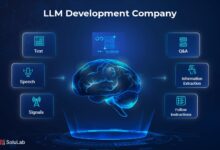Machine Learning Model Explainability with SHAP and LIME

As machine learning models are growing in complexity, it is getting harder to understand their reasoning for decision-making. Machine learning models are being leveraged to support and inform high-stakes decisions in healthcare, finance, and government. However, ethical and practical dilemmas can arise due to our inability to understand how a prediction came to be. This is where model explainability comes in, and we will discuss two amazing approaches to explainability: SHAP and LIME (Local Interpretable Model-agnostic Explanations).
In this article, we outline the importance of explainability for machine learning, outline the key differences and similarities between SHAP and LIME, and provide learners the resources needed to apply these approaches to their own real-world projects. So if you are currently in a Machine Learning Course or are contemplating taking one, understanding these concepts will help you build explainable and trustworthy models!
Why Machine Learning Model Explainability Matters?
Machine learning (ML) models are becoming central to decision-making across a range of fields, including healthcare, finance, marketing, and criminal justice. Although these models may be very accurate, the intricacies of the models make them “black boxes” that provide predictions but no guarantees for their rationale. The fear of “do we trust this algorithm” is not addressed by transparency and explains concerns specific to explainability.
Building Trust and Transparency
Explainability offers stakeholders a more comprehensive understanding of how and why a model comes to a decision. This trust requires transparency, especially when ML models evaluate “yes or no” decisions in crucial areas such as loans, diagnoses, or court rulings. However, if end users have some understanding of how to interpret the results, they are more likely to rely on its conclusions.
Ensuring Fairness and Reducing Bias
ML models have been trained on biased or incomplete data and can lead to insulating or compounding unfairness, even if a built-in algorithm restricts it. Explainability techniques allow developers to observe which features contribute to predictions and can assist in identifying how to limit bias in the training data. For example, if the hiring algorithm reflects unfair or biased demographic tendencies, explainability could indicate patterns that would require intervention.
Enhancing Model Debugging and Improvement
Understanding how and why models make decisions can assist developers to identify flaws or unexpected behaviour in their models. If a developer uses explainability methods to find important predictors or decision paths, this will lead to improvements to their model in an iterative way. This ultimately improves model performance and robustness.
Meeting Regulatory and Ethical Standards
Legislation, like the GDPR, requires reasoning for automated decisions that include people. Explainability supports those compliance obligations through mundane but easy to understand reasoning for predictions. If AI is transparent, it is ethically designed by giving users the right to know how decisions are made related to the use of AI technology, providing safe paths to the deployment of AI.
What Are SHAP and LIME?

SHAP (SHapley Additive exPlanations) and LIME (Local Interpretable Model-agnostic Explanations) are common methods for explaining machine learning model predictions. They are both used to allow interpretability with sometimes complex “black-box” models, giving insight into how the original features affect a model’s output.
LIME: Local Interpretability
Unlike overall importance, LIME accounts for local influence the way it explains predictions. More explicitly it takes a single prediction and approximates the complex model’s behaviour in the area surrounding that prediction via an interpretable (linear regression or decision tree) model. It also creates slight perturbation to the input data surrounding a sample to better understand how a prediction might change, which assists when estimating which features contributed most to that specific prediction.
Key points:
- Model-agnostic (works with any ML model)
- Focuses on explaining individual predictions
- Uses local surrogate models for interpretation
SHAP: Global and Local Interpretability with Game Theory
SHAP differs from LIME, because it embeds cooperative game theory via Shapley values based on cooperative games. It ultimately more fairly distributes the “pay-out” (the model prediction) among features, taking into account how much each feature contributed to each model prediction. SHAP values provide local explanations (the contribution of each feature to a single prediction), and can also provide global explanations (importance of features overall) (for the specified number of predictions).
Key points:
- Model-agnostic but can be optimized for specific models
- Provides consistent and theoretically sound explanations
- Offers both local and global interpretability
SHAP vs. LIME: A Comparative Overview
Machine learning models can often be complicated and hard to interpret, which is why we are seeing explainability techniques like SHAP and LIME become common tools. While both are useful for understanding features contributing to predictions, they do it in different ways.
Explanation Approach
LIME (Local Interpretable Model-agnostic Explanations) has the goal of explaining an individual prediction by locally approximating the complicated model, and the method creates a factious simple interpretable model around the predicted data point. LIME observes the changes in predictions when we perturb the input data slightly, and so it also identifies the features that are the most influential for that particular instance. Though LIME is very efficient when interpreting locally, it provides an approximation of the underlying function which may differ from the global behaviour of the model.
Computational Complexity and Use Cases
In general, we should apply the faster and easier-to-apply LIME and use it for a quick local explanation; but sometimes LIME can also provide unstable explanations because of reliance of local surrogate models. SHAP, however, is always computationally tedious, but provides more rigorous and consistent interpretations than LIME, making it useful in cases where a global understanding of models is required.
How to Use SHAP and LIME in Practice?
Machine learning models typically require explanation in order to establish trust and transparency, especially in sensitive applications like healthcare or finance. There are two relatively common tools that provide some type of interpretability of model predictions – SHAP and LIME.
Using LIME
LIME interprets a model by creating a local surrogate model around a particular prediction, so it can explain why the model made that particular prediction. To use LIME you first select the particular prediction or data point you want to explain, and then you create perturbed samples around that point. You acquire the model’s predictions for your perturbed samples – so for LIME to work we need a black-box model. Then LIME fits a simple and interpretable model, usually a linear regression to this local data. The coefficients of this surrogate model tell you a measure of how important the features for that prediction. In use, LIME is simple to implement with any black-box model and it is particularly useful for a quick intuitive explanations of individual model predictions.
Using SHAP
SHAP provides a value (Shapley value) for each feature, to reflect its contribution to the prediction based on cooperative game theory, which provides the theoretical backing for SHAP. To apply SHAP, simply determine the model type you want to explain, the dataset you want to explain, and compute the SHAP values for each feature in each observation. The SHAP value for a given feature in a given observation reflects how much that feature contributed to pushing the prediction higher or lower than a baseline expectation. This is important because SHAP gives you explanations at the local level (explanations for each individual prediction) as well as global considerations (importance of features across the dataset). Libraries such as SHAP in Python conveniently have built-in support for certain model types and provide visualizations like summary plots and feature dependence plots to help users interpret the results.
Best Practices
SHAP and LIME were both built to be interpreted carefully. Ideally, you will want to choose SHAP when you are looking for an explanation that will be consistent across data points/expected and to ground your findings in theoretical constructs, and use LIME when you want fast, intuitive explanations of local behaviour. You could also use SHAP and LIME in a complementary way – you can explore the data and get an initial understanding of explanations through LIME, then turn to SHAP for greater detail. No matter the method, you should validate the explanation based on domain knowledge to ensure that the results hold and that the explanations offer any considerations for interpretable meaning.
Applications in Industry
Machine learning interpretability tools like SHAP and LIME are shifting the way industries use AI models by providing insight into how the models make decisions, which can support transparency and trust in the model.
Healthcare
In health care, SHAP and LIME can allow physicians and researchers to demonstrate how diagnostic or treatment recommendation models are making predictions. For example, using either of these models, medical personnel could specify why a patient was flagged as high-risk for a diagnosis by isolating relevant features such as age, lab results, or medical history. Transparency to stakeholders better informs clinical decision-making processes and keeps regulators happy.
Finance
SHAP and LIME have been adopted in the finance sector to explain models predicting approvals for credit scores, fraud detection, and risk assessment. For instance, financial stakeholders must be able to explain to regulators the reasoning behind drastic loan modification decisions. A failure to inform the applicant of the reason for acceptance or rejection of the application runs the risk of regulatory non-compliance and inequitable lending practices. Use of SHAP and LIME tools could discover if there are data and model biases that will lead lenders to more unfairly act, which will make the next loan applicant’s loan application more difficult.
Marketing and Customer Analytics
In marketing, explainability provides teams with insight into customer segmenting and targeting decisions. For example, SHAP and LIME allow marketers to identify customer attributes that inform predictions about propensity to churn, or likelihood to purchase, which allows marketing teams to design more bespoke campaigns.
Manufacturing and Supply Chain
In the engineering sector, organizations also use these techniques to explain machine-level predictive maintenance models so they understand why a model is demonstrating a machine failure, and what factors contributed to that prediction. This helps the organization to optimize their maintenance schedule, and reduce downtime.
Legal and Compliance
In regulated industries, explainable AI helps to provide confidence that an organization can use these models in alignment with regulations designed to protect consumers, such as the EU’s General Data Protection Regulation (GDPR), which requires organizations to be transparent in automated decision-making.
Why Learn SHAP and LIME in a Machine Learning Course?
Understanding how machine learning models make decisions is critical because such models grow increasingly complex, yet they are also increasingly deployed in important applications. As SHAP and LIME are two of the preeminent tools for interpreting and explaining model predictions, they are super important skills when learning machine learning.
Enhancing Model Transparency
Learning SHAP and LIME gives students a base knowledge to emulate opening the “black box” of complicated machine learning models. Learning these explainability tools will increase transparency, which is necessary to build trust with the people or stakeholders, clients, and users, that make decisions based on model outputs in high-stakes environments including healthcare, finance, and legal systems.
Improving Model Debugging and Performance
Explainability tools could also help us better understand which features contribute to errors or unexpected model behaviour. Better understanding model decisions, we would be able to debug our models, improve and refine the existing features, and eventually make better models.
Meeting Ethical and Regulatory Requirements
As the emphasis on ethical AI and regulatory compliance, such as GDPR’s “right to explanation,” grows, the knowledge of how to implement SHAP and LIME allows practitioners to create AI systems that are fair, accountable, and transparent.
Gaining a Competitive Edge
Knowing these explainability techniques means that practitioners have one more skill in their toolbox, and enhances candidates’ appeal in the job market, especially as companies prioritize explainable and trustworthy AI systems.
Practical, Hands-on Learning
SHAP and LIME are very mainstream, largely due to support in most of the popular ML libraries and frameworks, so the tools are accessible for practitioners to begin experimenting with in practice. Learning to use these tools allows practitioners a better understanding of model behaviour and the importance of interpretability.
Final Thoughts
As artificial intelligence becomes more assimilated in our everyday lives, and the need for explainable machine learning models is not discretionary, it’s obligatory. SHAP and LIME help data scientists, developers, and the intended parties peer into the void of the black box and provide measures of trust and accountability in AI systems.
If you are taking or considering a Machine Learning course or Supervised Learning be sure that there are practical modules on SHAP and LIME. These tools will not only improve your technical profile, but also help you present yourself as a conscientious, and broad minded machine learning practitioner.



